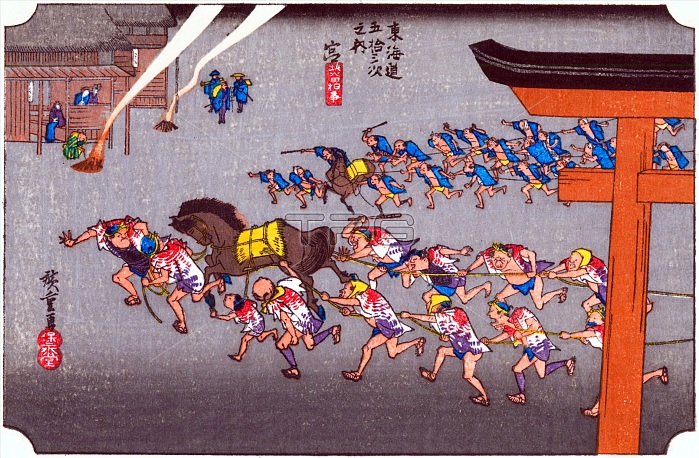
Miya: Two gangs of men and a horse dragging a festival car (not shown) past the entrance to Miya Temple on a fete day. The name Miya literally means 'shrine', and is a shortened word denoting the Atsuta Shrine. It is one of the most important shrines in the country because it holds one of the three divine symbols of the Japanese imperial throne. Now Nagoya City has grown around the shrine to become the third largest metropolis in Japan. Utagawa Hiroshige (1797 October 12, 1858) was a Japanese ukiyo-e artist, and one of the last great artists in that tradition. He was also referred to as Andi Hiroshige (an irregular combination of family name and art name) and by the art name of Ichiyusai Hiroshige. The Ti kaidi (East Sea Road) was the most important of the Five Routes of the Edo period, connecting Edo (modern-day Tokyo) to Kyoto in Japan. Unlike the inland and less heavily travelled Nakasendi, the Ti kaidi travelled along the sea coast of eastern Honshu, hence the route's name.
| px | px | dpi | = | cm | x | cm | = | MB |
Details
Creative#:
TOP27178305
Source:
達志影像
Authorization Type:
RM
Release Information:
須由TPG 完整授權
Model Release:
No
Property Release:
No
Right to Privacy:
No
Same folder images:

 Loading
Loading